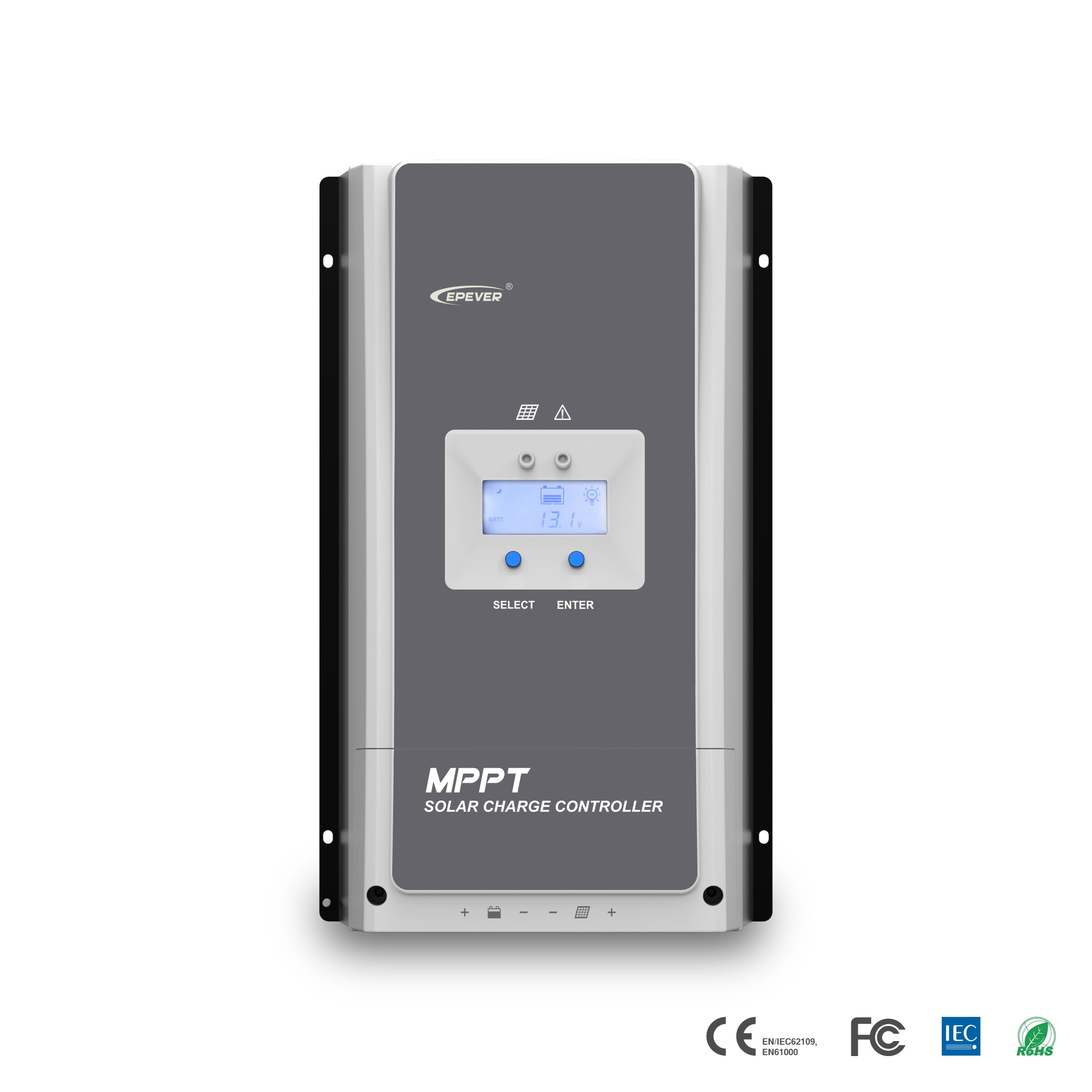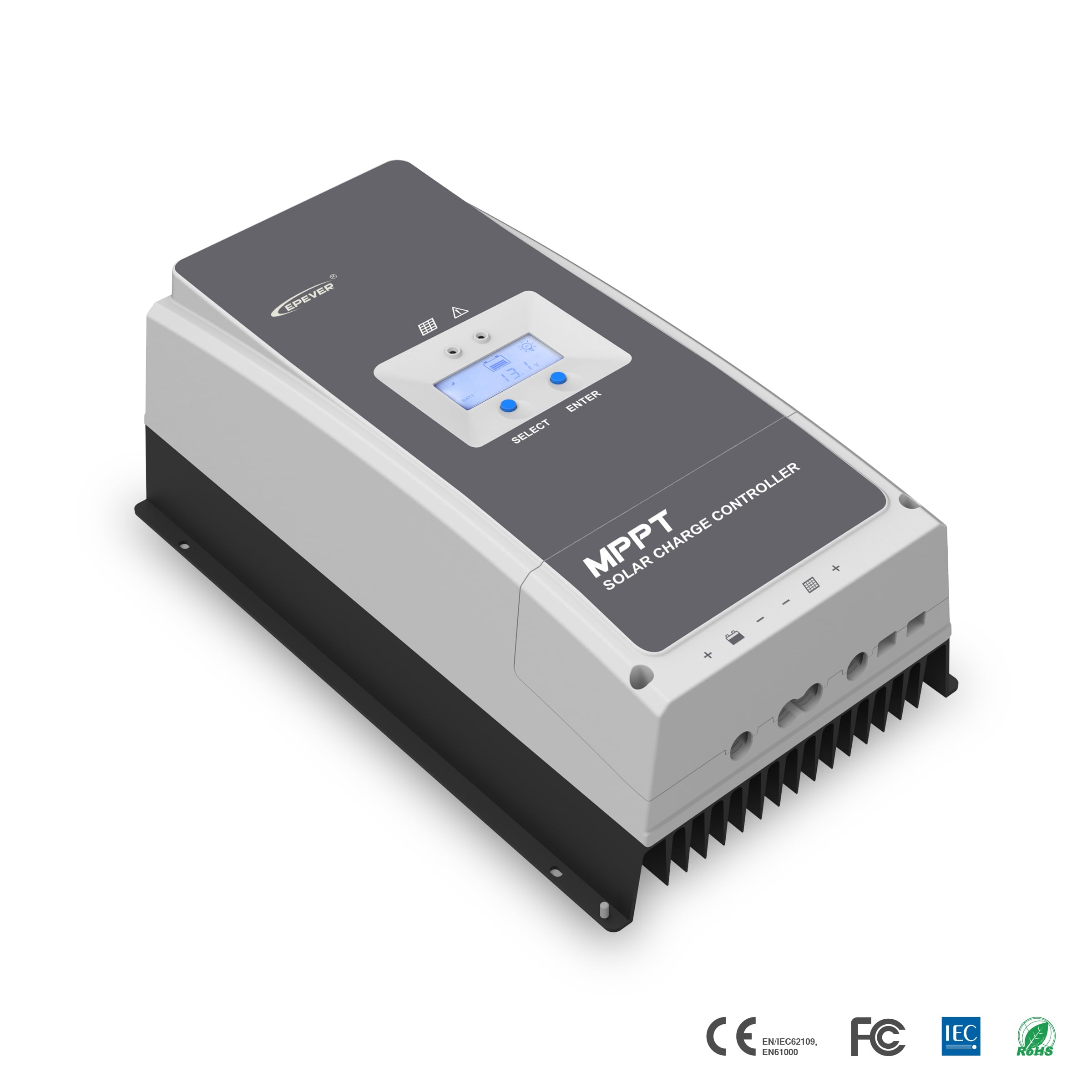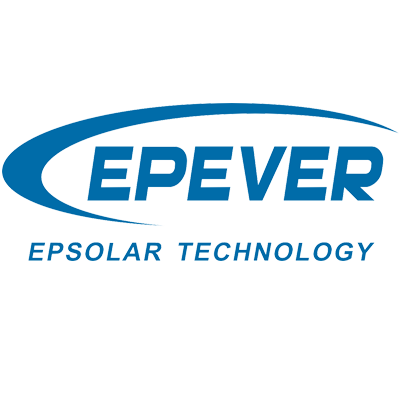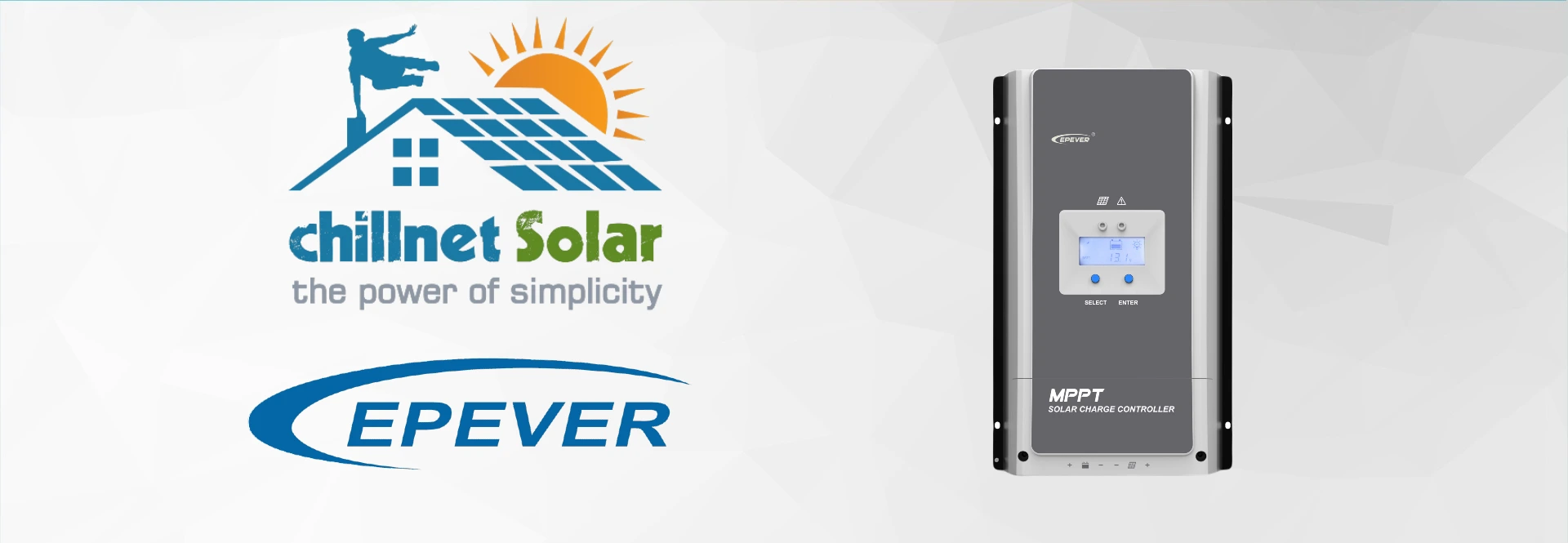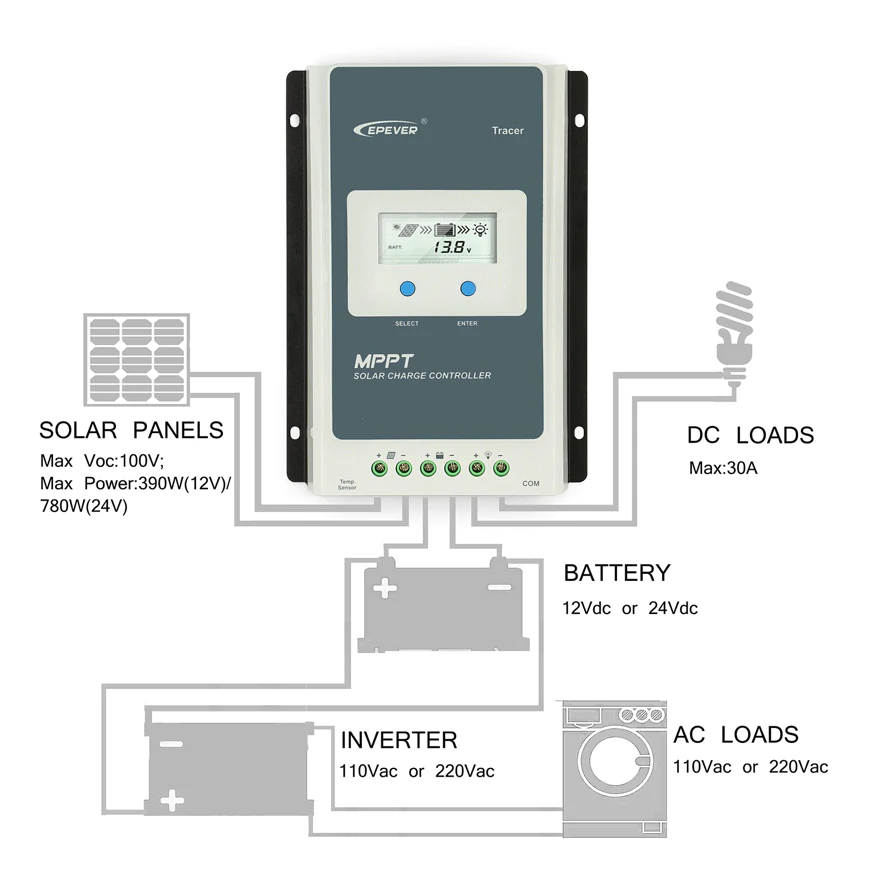EPEVER 50-100A MPPT Charge Controller
R3,838.70 – R7,570.45 incl Vat
31 in stock
EPEVER 50-100A MPPT Charge Controller
Tracer-AN (50A-100A) series is the largest charge controller series in EPEVER’s product range and can take up to 5KW solar panel. For even more power, the user can use PAL-ADP-50N to connect max. 6 units of a controller in parallel for up to 30KW system. The multiple dry contact signals are designed for a diversified application.
Description
EPEVER 50-100A MPPT Charge Controller
Tracer AN Series (50~100A) MPPT Charge Controller 12/24/36/48V
FAQ
Max. 6 chargers can be connected in parallel, parallel managing module PAL-ADP-50AN is needed for better state syn between chargers, e.g., all chargers go to Float stage within 10 minutes. Note that chargers can be of different models but they all have been Tracer-AN (50A ~ 100A) series.
The Tracer-AN (50A ~ 100A) has two communication ports but that’s for easy daisy chain connection when multiple chargers are connected together, directly connecting MT50 and WiFi module to the two ports is forbidden, an extra module called RS485-1M2S must be used when both MT50 and WiFi module is desired in the system.
Features
EPEVER 50-100A MPPT Charge Controller
- MPPT tracking efficiency above 99.5%
- Maximum charge conversion efficiency as high as 98%
- Support lead-acid and lithium-ion batteries
- Common negative grounding, Charging current up to 100A
- Charging power and current limitation function
- High-temperature charging power derating function
- 3 relays design for different demand: utility, generator and load
- Support up to 6 units in parallel
- Remote temperature and voltage sensor design
- Isolated RS-485 with 5VDC/200mA and MODBUS protocol
EPEVER 50-100A MPPT Charge Controller Specification
About MPPT Charge Controllers
Introduction on MPPT Charge Controllers?
- The most basic functionality of a solar power system is solar panels collecting energy from the sun and storing it in batteries so that you can use it whenever you’d like.
- However, you can’t simply connect your solar panels directly to your batteries and expect them to charge.
- To get the most out of your solar panels, you’ll need a charge controller to charge your batteries efficiently.
- The most efficient type of charge controller is the maximum power point tracking or MPPT charge controller like the EPEVER 50-100A MPPT Charge Controller.
What is Maximum Power Point Tracking?
Before we dive into how MPPT charge controllers (EPEVER 50-100A MPPT Charge Controller) work, let’s explain how they get their name.
- The voltage at which a solar panel produces the most power is called the maximum power point voltage. The maximum power point voltage varies depending on environmental conditions and the time of day.
- MPPT charge controllers like the EPEVER 50-100A MPPT Charge Controller get their name because they monitor the solar panel and determine the maximum power point voltage for the current conditions. This function is called maximum power point tracking, or MPPT for short.
What Is An MPPT Charge Controller?
- Solar panels and batteries have different optimal operating voltages. Not only that, these voltages fluctuate. An MPPT charge controller (EPEVER 50-100A MPPT Charge Controller) is a DC-DC converter that maximizes the efficiency of a solar system. It does this by optimizing the voltage match between the solar panel array and the batteries.
- For example, depending on the state of charge, a 12-volt battery has a nominal voltage that ranges between just over 10 volts and just under 13 volts. Furthermore, the voltage required to charge a 12-volt battery ranges between 13.5 and 14.5 volts depending on the charging phase.
- On the other hand, the optimum output voltage of a solar panel varies depending on the panel’s temperature, time of day, how cloudy it is, and other environmental factors. For instance, under ideal conditions, a 250-watt solar panel may have an optimal operating voltage of 32 volts. As the panel heats up in the sun or on a hot day, the optimal voltage may drop to as low as 26 volts.
- The rated panel voltage must be higher than the battery voltage to accommodate for these voltage drops in the panel and the increased required battery charging voltage. Without an MPPT charge controller (EPEVER 50-100A MPPT Charge Controller), this voltage differential leads to a lot of wasted power.
Benefits of an MPPT Charge Controller
More Efficient at Using Power
On a properly sized solar power system, it’s not uncommon to see up to a 30% increase in efficiency by switching to an MPPT controller like the EPEVER 50-100A MPPT Charge Controller. This efficiency increase is even more significant on systems where the solar panel voltage is much higher than the battery voltage, like our example above.
Best for Large Systems
Utilizing an additional 20-30% of power out of your system becomes more advantageous as the size of your system grows. For this reason, MPPT controllers (EPEVER 50-100A MPPT Charge Controller) are often best used on large systems and may not be worth it on smaller, simpler setups.
Better in Cloudier Environments
The maximum power point tracking feature of MPPT controllers (EPEVER 50-100A MPPT Charge Controller) is a huge benefit in cloudy environments where the max power point of the solar panels will be fluctuating all day.
The difference between PWM and MPPT solar charge controllers
The crux of the difference is:
- With a PWM controller, the current is drawn out of the panel at just above the battery voltage, whereas
- With an MPPT solar charge controller the current is drawn out of the panel at the panel “maximum power voltage” (think of an MPPT controller (EPEVER 50-100A MPPT Charge Controller) as being a “smart DC-DC converter”)
- Battery voltage = 13V (battery voltage can vary between say 10.8V fully discharged and 14.4V during absorption charge mode). At 13V the panel amps will be slightly higher than the maximum power amps, say 5.2A
- With a PWM controller, the power drawn from the panel is 5.2A * 13V = 67.6 watts. This amount of power will be drawn regardless of the temperature of the panel, provided that the panel voltage remains above the battery voltage.
- With an MPPT controller (EPEVER 50-100A MPPT Charge Controller) the power from the panel is 5.0A * 18V = 90 watts, i.e. 25% higher.
- However this is overly optimistic as the voltage drops as temperature increases; so assuming the panel temperature rises to say 30°C above the standard test conditions (STC) temperature of 25°C and the voltage drops by 4% for every 10°C, i.e. total of 12% then the power drawn by the MPPT will be 5A * 15.84V = 79.2W i.e. 17.2% more power than the PWM controller.
In summary, there is an increase in energy harvesting with the MPPT controllers (EPEVER 50-100A MPPT Charge Controller), but the percentage increase in harvesting varies significantly over the course of a day.
MORE INFO ON THE EPEVER 50-100A MPPT Charge Controller
- The Tracer AN series. Based on common negative design and advanced MPPT control algorithm, with LCD displaying running status, this product is artistic, economical and practical. Features:
- Advanced MPPT technology, with efficiency no less than 99.5%
- Ultra-fast tracking speed and guaranteed tracking efficiency
- Advanced MPPT control algorithm to minimize the maximum power point loss rate and loss time
- Wide MPP operating voltage range
- High quality components, perfecting system performance, with maximum conversion efficiency of 98%
- Accurate recognition and tracking of multiple-peaks maximum power point
- International famous brands of ST and IR’s components of high quality and low failure rate are used, which can ensure the product’s service life
- Charging power and current limitation function
- Compatible with lead-acid and lithium-ion batteries
- Battery temperature compensation function(only for Lead-acid battery)
- Real-time energy statistics function
- Overheating power reduction function
- Multiple load work modes
- The communication port adopts professional protection chip
- With RS-485 communication bus interface and Modbus communication protocol.
- Monitor and set the parameters via mobile phone APP or PC software
- Full-load operation without any drop in capacity within the range of working environment temperature
- Extensive electronic protection
MORE ABOUT EPEVER
We provide tools to explore the off-grid world without concerns about running out of electrical power.
A team of talented creators came together, bringing their knowledge, experience, passion, and curiosity to transform complex advanced technology into devices for harvesting energy from the sun.
Headquartered in China’s capital–Beijing-, EPEVER benefits from diverse sources of talent. We started from a small company in 2007 and now we are playing a global role in off-grid solar equipment, with more than 120 partners all over the world.
Our mission is to ensure, everyone has access to electrical energy everywhere by helping people to perform better with higher efficiency where there is no grid power.
EPEVER is now a leading manufacturer of solar charge controllers, off-grid inverters, inverter chargers, solar power systems, and other solar power units.
Additional information
| Weight | N/A |
|---|---|
| Dimensions | N/A |
| Size | 50A, 60A, 80A, 100A |
| Brand name |
Technical Specification
Technical Specification



